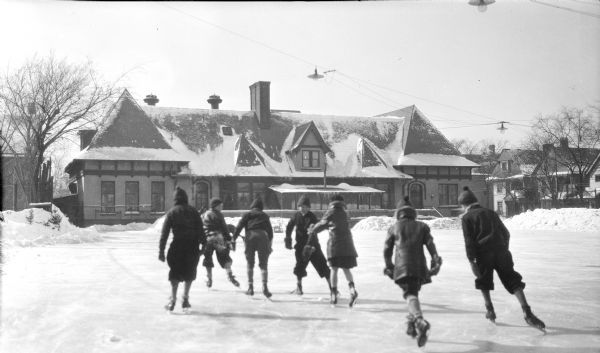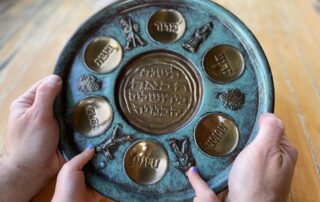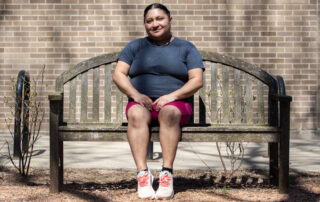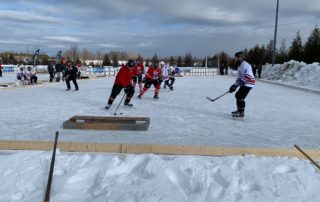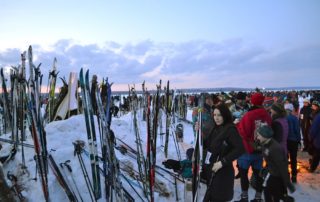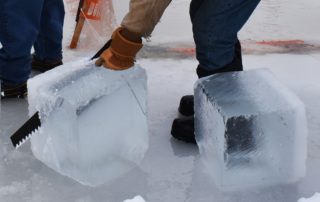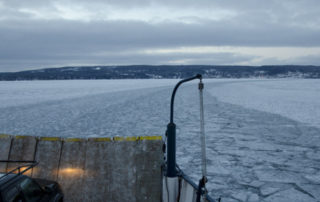People do a lot to make the best of Wisconsin’s brutal winters. Some strap on some snowshoes or hit the sledding hills. The extremists participate in Polar Plunges. As Milwaukee historian and author John Gurda reminds us, the winter thrill seekers have been thriving in the area for a long time.
==
Were our ancestors really hardier than we are? Were they better equipped to weather Wisconsin’s winters?
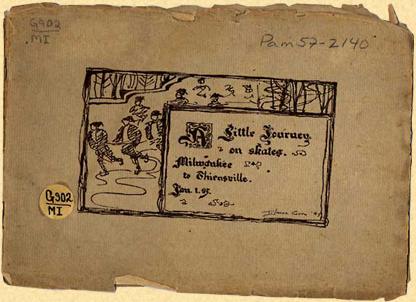
Cover of the self-published “A Little Journey on Skates” by Joseph McClellan Bell. (Courtesy of Wisconsin Electronic Reader)
One story says they were.
On New Year’s Day in 1895, ten young men navigated the Milwaukee River from North Avenue all the way to Thiensville — a distance of 18 miles—on ice skates. One of them, Joseph Bell, left a chronicle of the adventure, called “A Little Journey on Skates,” and it’s warm reading on a cold winter’s day.
Wearing knickerbockers, thick sweaters, and strap-on skates, the group left Milwaukee at 10 in the morning.
“Many skaters were upon the ice for the first few miles north,” wrote Bell. “But we had only to climb over the first weir of frozen water falls where the dull roar of the under cataract sounded solemn and uncanny, to leave behind all these ephemeral merrymakers and the last view of the city.”
That cataract would have been in today’s Estabrook Park.
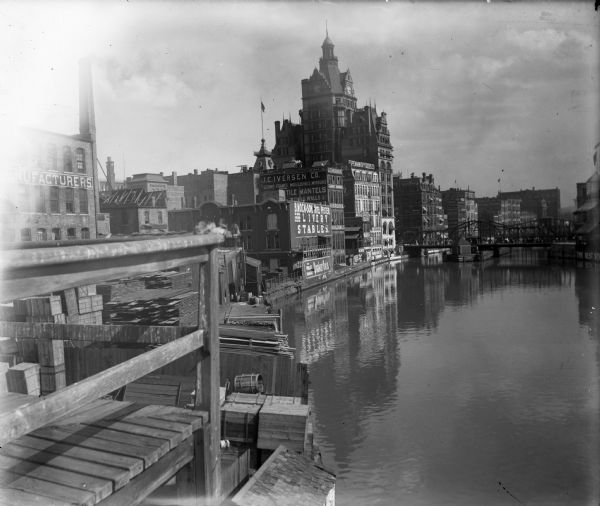
View of downtown Milwaukee, Wisconsin around 1898 from pier or dock of buildings along the Milwaukee River, including a building with a clock tower. Signage on brick exteriors reads “J.C. Iverson Co. / Picture Frames, Mouldings, Mirrors,” “B. Mock & Son Hotel Pfister Livery Stables,” “The Worlds Breakfast, Quaker Oats,” and “Espenhain Dry Goods Co. Wholesale & Retail, Carpets & Draperies.” (Courtesy of Wisconsin Historical Society)
The real fun started once they had the river to themselves.
“But the skating!,” Bell enthused. “Such skating as it was! Such ice and such a winter’s day as one might wait an entire season for to see — not a stirring of the air, save that we made ourselves as we rushed along the smooth black surface.”
The skaters were on uncharted ice, with plenty of hazards ahead. Their leader plunged into waist-deep water at the first flour mill, and Bell himself belly-flopped through what he called “a two-inch layer of slush water spread over a surface of sunken ice.”
But there were pleasant surprises as well:
“In shallow parts of the mid stream, we could see the fishes through ice clear as window glass,” he recalled.
The Milwaukeeans reached Thiensville in three hours and 40 minutes, traveling at an average speed of five miles an hour.
The pot of gold at the end of their rainbow was a prearranged “royal good dinner” of turkey and goose at Memmler’s Inn, a German restaurant on the river.
The skaters, Bell reported, were famished:
“I am afraid the smiling folk, who gazed at us through the sliding panel from the kitchen, must have wondered if we had ever had a square meal in our lives. . . . In half an hour the table looked as if a typhoon had struck it amidships,” he wrote.
After a full meal and a few drinks, most of the travelers took the train back to the city. Not Joseph Bell and two of his hardier companions.
Even though night was falling, they decided to skate home by moonlight, and that, according to Bell, was the best part of the journey:
“On we sped at ever increasing pace, until we had reached the limit for safety, and only tempering our speed when crackling surface ice and an opaque appearance of the river ahead, warned us of rapids underneath and ticklish skating above.”
Despite their best efforts to read the river, the skaters experienced “several somersaults,” wrote Bell, and one of them plunged into a water hole two feet deep.
The trio reached the North Avenue bridge at the stroke of eight, with their clothing “frozen hard and clanking like steel armour.”
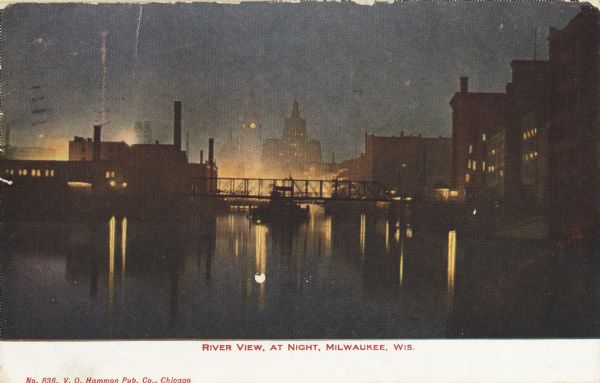
Railroad bridge over river and buildings at night in Milwaukee, Wisconsin circa 1909. In the distance is a building with a clock tower. Caption reads: “River View, at Night, Milwaukee, Wis.” (Courtesy of Wisconsin Historical Society)
Bell still faced a long streetcar ride home to the west side, but he had no regrets:
“Truly it was entrancing, that return trip, and romantically beautiful — by far the most conspicuous recollection that remains to me of the entire outing.”
You don’t have to skate to Thiensville and back, but Joseph Bell’s chronicle is a welcome reminder of winter’s unique potential for fun. Bell and his buddies had the right idea.
Unplug, they might tell their modern-day descendants.
Turn off those tyrannical screens.
Get outside and enjoy winter like genuine four-season Wisconsinites.
(Editor’s note: The technical director of this piece is Trina La Susa.)
